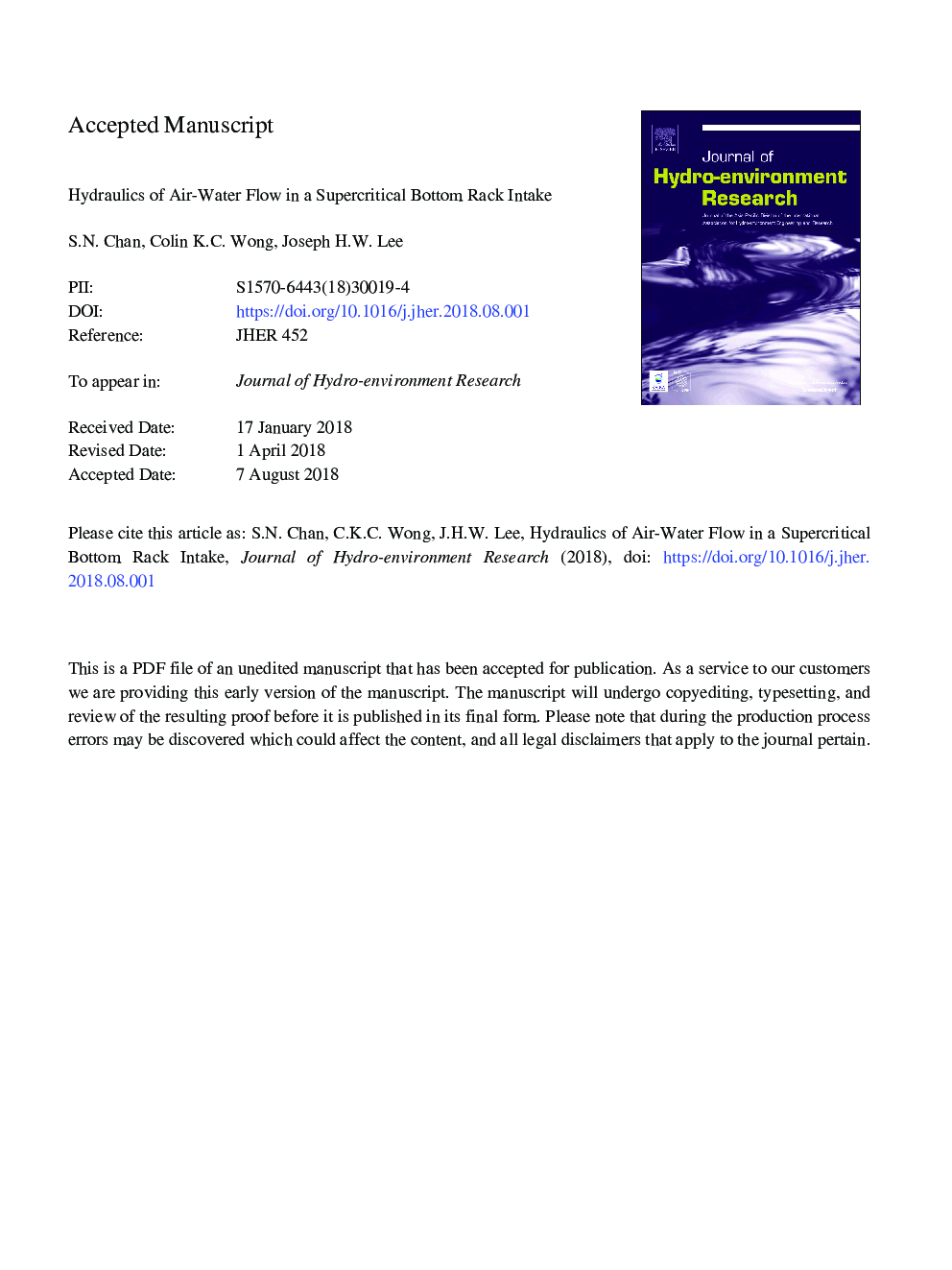| Article ID | Journal | Published Year | Pages | File Type |
|---|---|---|---|---|
| 8875433 | Journal of Hydro-environment Research | 2018 | 38 Pages |
Abstract
A compact bottom rack structure is used for diverting storm water flow on steep catchments in the hinterland of a densely built city into a drainage tunnel through a vortex dropshaft. This study investigates the complex three-dimensional, turbulent and aerated flow of the bottom rack intake structure by comprehensive experiments and three-dimensional Computational Fluid Dynamics (CFD) modeling. Extensive physical model tests were conducted on a 1:9.5 Froude scale model over a wide range of discharges and different rack bar shapes. The water depth, velocity and air concentration were measured. As the rack interception induces an energy loss, the depth of the supercritical flow increases as it passes across the racks. The rack interception also gives rise to a sheet jet beneath it. In the rack chamber, the flow consists of a wall jet that impinges on a spiral circulation of aerated flow, inducing significant turbulence and air entrainment. The average air concentration ranges from 20% to 50% and decreases with increasing discharge. The air concentration in the chamber appears to be little affected by the presence of the bottom racks or the cross-sectional shape of the rack bars. The complex flow features and air concentration distribution in the rack chamber are satisfactorily predicted by the 3D numerical model.
Keywords
Related Topics
Life Sciences
Agricultural and Biological Sciences
Agricultural and Biological Sciences (General)
Authors
S.N. Chan, Colin K.C. Wong, Joseph H.W. Lee,
